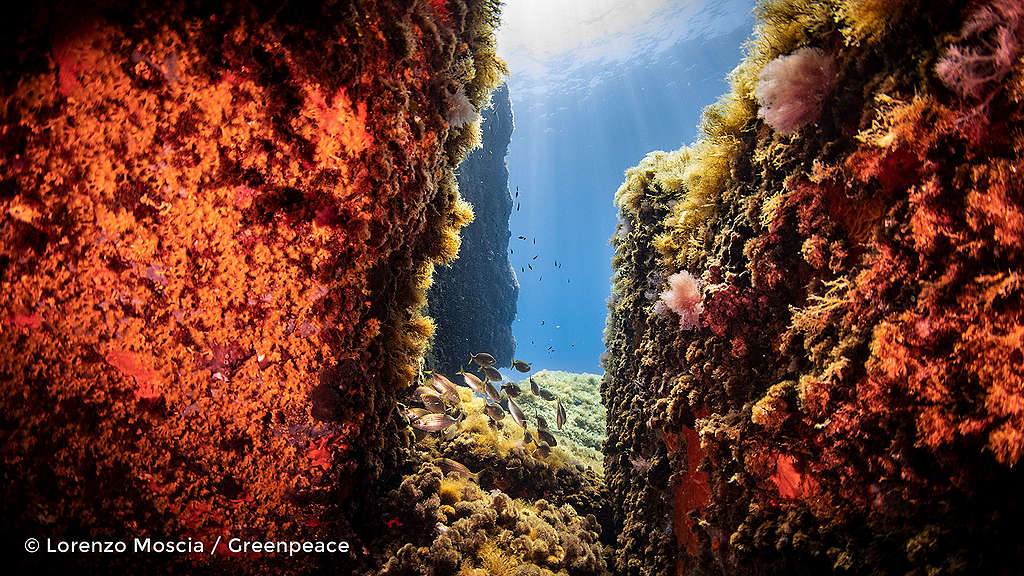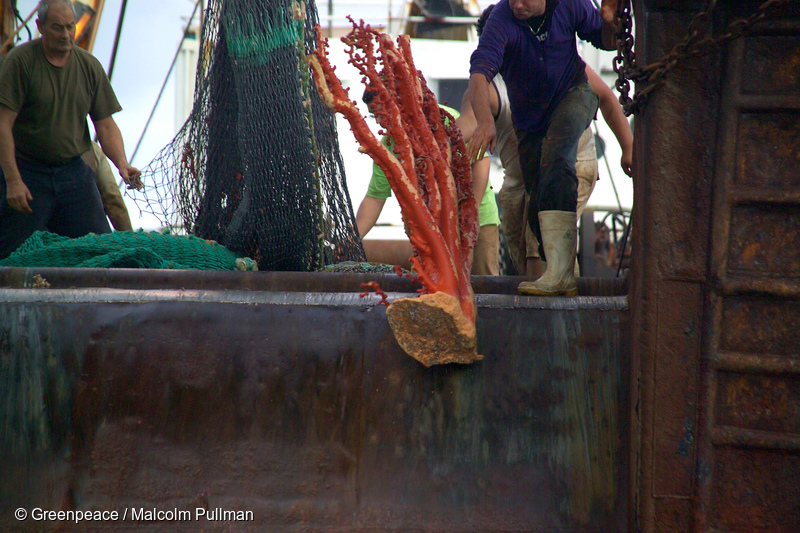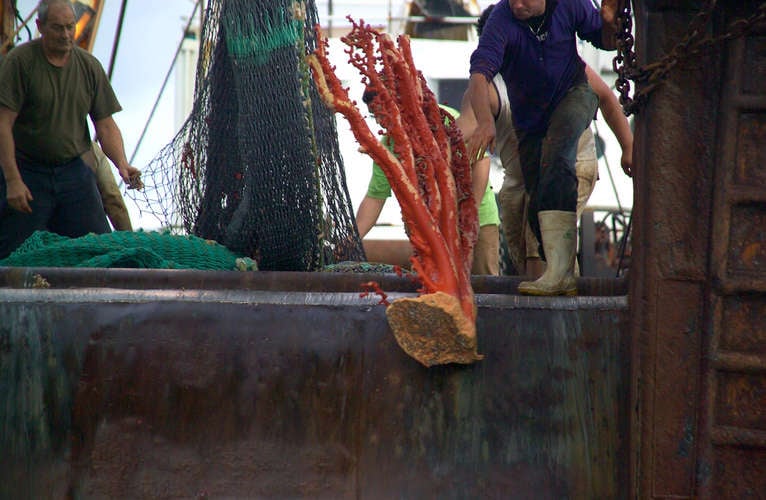Seamounts, or underwater mountains, are biodiversity hotspots and home to a stunning array of deep sea marine life. Every seamount should be protected, not just the tall ones.

Last week the Nelson based fishing company Sealord, a major player in the bottom trawling industry, released a sneaky proposal called “Seamounts Count”. They’re calling it “a breakthrough proposal” that “strikes a balance heavily in favour of conserving seamounts”.
It isn’t a breakthrough. Put out just ahead of a government forum to discuss ocean seafloor protection, it’s just a well-timed attempt to redefine what a seamount is.
What gets called a seamount?
According to NIWA scientists there are more than 800 seamounts, or underwater mountains, found in the waters of Aotearoa greater than 100m high.
But in its proposal Sealord says there are only 142 seamounts and they are proposing that only 127 of them be placed in conservation. That leaves the vast majority of seamounts still open to destructive bottom trawling.
So how did they magic up the idea that there are only 142 seamounts in New Zealand?
It’s all to do with height.
According to Sealord a seamount is any mountain that rises 1000m above the ocean floor. That’s a 900m difference to how NIWA scientists have defined a seamount. By that fairly creative accounting Sealord says there are only 142 known seamounts.
By redefining what a seamount is, Sealord is proposing that only a small number gain protection, allowing the fishing company to sidestep any potential ban on bottom trawling on all seamounts.
Every one of the more than 800 seamounts in Aotearoa is precious and needs protection to safeguard the future health of the ocean. It should not be up to the trawling industry to determine which underwater mountains they trawl and which they leave alone.
Greenpeace and other environmental organisations including the Deep sea Conservation Coalition are calling for a total ban on trawling seamounts and the public agree. Recent polling shows 79% of New Zealanders support a ban on trawling seamounts.
Why are seamounts so important?
Seamounts are incredible underwater hills, knolls and mountains that vary in size, shape, and the variety of life they sustain. These habitats are vital to the health of the ocean as a whole. They are biodiversity hotspots. Fed by nutrients rising from the cool depths towards the sunlit surface they are often home to ancient, slow growing coral forests and sea sponges which in turn create nurseries for young fish and crustaceans.
Species further up the food chain benefit too. Humpback whales for example have been known to use seamounts as navigational markers, feeding stations and for breeding purposes.
Seamounts have unique and endemic species living on them but bottom trawling indiscriminately destroys these underwater communities. Large, weighted nets are dragged over the mounts sweeping fish and everything else in the way up into the net including: ancient corals; starfish; crabs; sea urchins; brittle stars; mollusks and ancient sponges.

Does seamount height count?
It’s not the height that the seamount rises off the seafloor that makes a seamount biologically important, it’s the depth from the surface. A 100m or 1000m seamount could have the same ecological value, if it occurs in water depths that protected ancient corals can grow.
NIWA research highlights how fragile and vulnerable seamount habitats are. As few as 10 individual bottom trawls can reduce deep-sea coral forests to rubble, and it can take decades to centuries for the recovery of benthic communities on seamounts.
Bottom trawling, by disturbing the seabed sediment, also releases carbon dioxide back into the oceans, damaging the ocean, reducing biodiversity and increasing carbon emissions.
There’s no need to use destructive bottom trawling on precious biodiversity hotspots. The same fish species that the industry catches by trawling seamounts can be caught elsewhere. So it’s not a question of whether the industry can catch fish or not, just a question of where and how those fish are caught.
Sealord’s proposal does not protect seamounts. It allows the industry to continue destroying these vulnerable marine ecosystems.
In the middle of an ecological and climate crisis we can’t afford to allow the fishing industry to continue such destructive practices. It is vital we protect seamounts to preserve biodiversity and keep the ocean healthy for the future health of the planet and ourselves.
To find out more about the important role seamounts play in ocean health check out this report on biodiversity on seamounts in Aotearoa or this article about protecting deep sea corals.

Join the call to demand that the NZ Govt bans bottom trawling on seamounts and similar deep sea features, and stop issuing permits for bottom trawling in international waters.
Take Action


